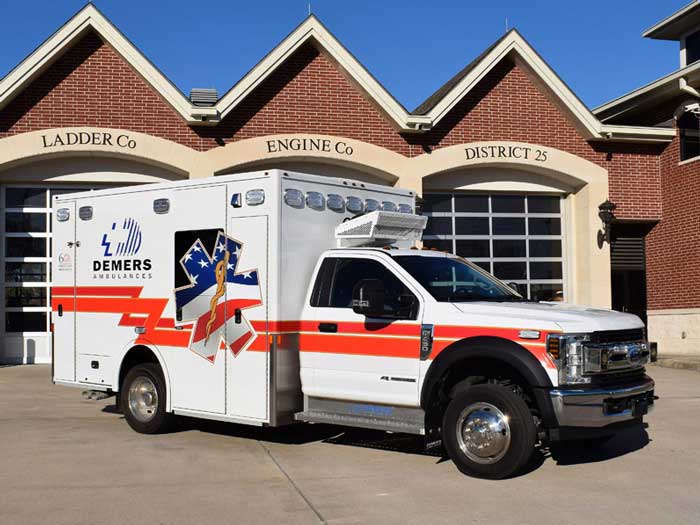How Much Does Ambulance Weigh: Guide to Types & Specs
When considering the weight of an ambulance, you’re delving into a world where function meets precision engineering. These life-saving vehicles are not only equipped with essential medical equipment but also designed to navigate various terrains swiftly. Understanding an ambulance’s weight is crucial, as it impacts everything from fuel efficiency to maneuverability in critical situations.
Ambulance weights can vary significantly based on their type and configuration. For instance, a standard ground ambulance might weigh between 10,000 to 14,000 pounds, depending on its build and the equipment it carries. On the other hand, specialized vehicles, like those designed for bariatric patients, might weigh more due to reinforced structures and additional equipment.
Knowing the weight specifics can help you make informed decisions, whether you’re a fleet manager looking to optimize performance or simply curious about these fascinating vehicles. Dive deeper to explore how weight influences the design and functionality of ambulances.
Key Takeaways
- Ambulance weight is crucial as it impacts fuel efficiency, maneuverability, and performance in emergencies.
- Standard ground ambulances typically weigh between 10,000 and 14,000 pounds, with variations based on type and configuration.
- The three primary ambulance types—Type I, II, and III—have distinct weights and designs, catering to different emergency service needs.
- Factors like equipment load and frame design significantly influence overall ambulance weight, affecting safety and operational efficiency.
- Lightweight ambulances prioritize fuel efficiency and are suited for urban environments, whereas heavy-duty models cater to demanding tasks with advanced medical equipment.
Understanding Ambulance Types
Ambulances come in three primary types: Type I, Type II, and Type III. Each type is designed for specific needs and built on distinct chassis configurations to accommodate those needs.

Type I Ambulances
Type I ambulances are built on heavy-duty truck chassis, comprising a separate box module mounted to the truck. This configuration results in a robust structure suitable for advanced life support services. Typical weights for these ambulances range from 10,000 to 14,000 pounds (4,536 to 6,350 kilograms). This weight is due to the sturdy chassis and equipment required for emergency medical services, making Type I ambulances the heaviest among the types.
Type II Ambulances
Type II ambulances feature a van chassis with a modular body attached, offering a more compact and lighter option compared to Type I. They typically weigh between 7,000 and 10,000 pounds (3,175 to 4,536 kilograms). These ambulances are often used for transporting patients over longer distances or when a less bulky vehicle is required, thanks to their more integrated build and lighter weight.
Type III Ambulances
Built on a van chassis like Type II, Type III ambulances have a custom module that’s more integrated into the body of the van. This integration creates a balance between space and maneuverability, allowing for efficient operations with advanced equipment. While their weight isn’t explicitly listed, it lies between Type I and Type II due to their unique configuration and enhanced capabilities.
Factors Affecting Ambulance Weight
Understanding the factors that influence an ambulance’s weight helps you appreciate its design and functionality. From the type and model to equipment load and frame design, these elements collectively contribute to the overall weight.

Type and Model Specifications
Ambulance type plays a critical role in its weight. Type 1 ambulances, built on heavy-duty truck chassis, weigh between 16,500 and 21,000 pounds. They are suited for advanced life support (ALS) services. Conversely, Type 3 ambulances, on a van chassis, usually weigh around 14,000 pounds, ideal for basic life support (BLS) services. The choice between Type 1 and Type 3 depends on service requirements, impacting weight due to their structural differences.
Equipment Load
The equipment inside an ambulance adds substantial weight. Essential medical devices, such as defibrillators and ventilators, contribute to this load. The presence of additional life-saving technology in ALS units increases weight compared to BLS units. Each piece of equipment impacts the overall weight, so understanding what’s included helps estimate the ambulance’s total weight.
Frame Design
Frame design affects an ambulance’s structural weight. Ambulances with a reinforced frame for various terrains or specific patient needs, like bariatric transport, have additional weight. The frame’s build quality and materials used determine its strength and weight. This factor is crucial for operations in challenging environments where durability and safety are prioritized.
Comparing Ambulance Weights
Understanding how ambulances differ in weight helps you appreciate their functionality and purpose. Depending on their design and equipment, ambulances can vary greatly in weight.
Lightweight Options
Lightweight ambulances prioritize fuel efficiency and reduced vehicle wear, weighing between 8,000 and 10,000 pounds (3,600 to 4,500 kilograms). By using materials like aluminum or composites, these ambulances maintain structural integrity while minimizing weight. For example, they often have a narrower box with simplified designs and fewer onboard equipment, making them suitable for urban environments where space and maneuverability are critical.
Heavy Duty Models
Heavy duty ambulances, typically built on sturdy truck or van chassis, can weigh between 10,000 to 14,000 pounds (4,500 to 6,350 kilograms). These vehicles are designed for demanding tasks, including advanced life support services. They feature reinforced frames and a comprehensive suite of medical equipment, like defibrillators and ventilators. You could encounter such ambulances in settings that require robust performance, given their capability to carry substantial payloads and handle complex medical emergencies.
Importance of Ambulance Weight
The weight of an ambulance is a critical aspect that impacts its safety, performance, and operational efficiency. Understanding how this factor influences each area can help you appreciate the design choices and usage considerations for these vehicles.
Safety and Performance
Ambulance weight significantly affects safety. Heavier ambulances, such as those built on truck chassis, offer increased stability on roads. However, they can also present a higher center of gravity, raising the chance of rollover accidents during sudden maneuvers. Proper weight distribution, especially when carrying equipment and patients, is crucial to maintaining controlled and safe operation.
In terms of performance, a well-balanced weight ensures better handling and control. It directly influences how effectively an ambulance responds in emergency situations. Weight considerations extend to different ambulance types, with Type I vehicles weighing up to 14,000 pounds being more suited for advanced life support services due to their capacity and equipment carrying potential.
Fuel Efficiency
Fuel efficiency is another essential factor affected by ambulance weight. Generally, lighter ambulances consume less fuel, offering cost savings and reduced environmental impact. Lightweight models, often used in urban settings, prioritize efficiency, using materials like aluminum or composites to minimize weight.
Conversely, heavier ambulances, necessary for rugged terrains or high-casualty incidents, require more fuel due to their robust construction and additional equipment. Your choice of ambulance weight directly influences your operational costs and environmental footprint, emphasizing the need for careful consideration based on usage requirements.
Conclusion
Understanding the weight of ambulances is vital for ensuring their optimal functionality and performance. Whether you’re managing a fleet or involved in designing these essential vehicles, knowing the specifics of ambulance weights helps in making informed decisions. From the type of chassis to the equipment load and frame design, each aspect contributes to the overall weight and impacts everything from fuel efficiency to safety. By considering these factors, you can select the right ambulance that meets your operational needs while balancing cost and environmental considerations.







